Rita Marie Johnson is arguably one of the most successful peace advocates in the world. But you won’t see her marching in the street in protest of the war in Afghanistan or picketing outside a military base.
Just as the United States proclaimed, with tragic lack of success, in the Vietnam War, hers is a fight waged for hearts and minds, fought in classrooms rather than on the streets. And she goes for the most profound targets: kids.
 Unlike with the U.S. military, however, Johnson’s strategy seems to be working. In her soft-spoken way, she may talk about things like coherence and intuition, but she raised a “peace army” in Costa Rica that eventually led to the creation there of a governmental ministry for peace, a peace academy, and a nonviolence curriculum that has been taught widely in that country for the past six years.
Unlike with the U.S. military, however, Johnson’s strategy seems to be working. In her soft-spoken way, she may talk about things like coherence and intuition, but she raised a “peace army” in Costa Rica that eventually led to the creation there of a governmental ministry for peace, a peace academy, and a nonviolence curriculum that has been taught widely in that country for the past six years.
After 17 years in Central America, she’s returned to take on her native United States, starting with Texas. The first full-length version of her program, called BePeace, to be offered in Texas will be taught in Arlington next week. And she’s considering making Flower Mound her new home and headquarters.
But the United States isn’t Costa Rica. That compact nation abolished its army in 1949, while this huge, sprawling country is currently engaged in its longest-running war, spends hundreds of billions of dollars each year on its military, and during the George W. Bush administration claimed for itself the right to strike first against potential enemies that had not yet attacked us.
Johnson isn’t daunted. The U.S. government isn’t so different from Costa Rica’s, she said, and she is certain she can reproduce here what she has accomplished there. “Peace infrastructure is a new concept,” she said. “We have infrastructure for war — why wouldn’t we have infrastructure for peace? It’s so important to the well-being of our children.”
Her timing is right. Serious study on the topics of peace and nonviolence is becoming more widespread — even in a part of the country known more for the gun-toting predilections of its residents than for progress in conflict resolution. In Denton, the University of North Texas recently affiliated with the Vivian Castleberry Peace Institute, making it the only four-year university in the Southwest with a peace studies program.
Johnson’s program is no quick fix of feel-good platitudes. It’s a five-day, 40-hour science-based curriculum for teachers who would then go on to teach others and integrate those techniques into their own classrooms. The program uses a variety of methods, from a system of cards that introduces kids to the idea of talking about their emotions, to biofeedback software.
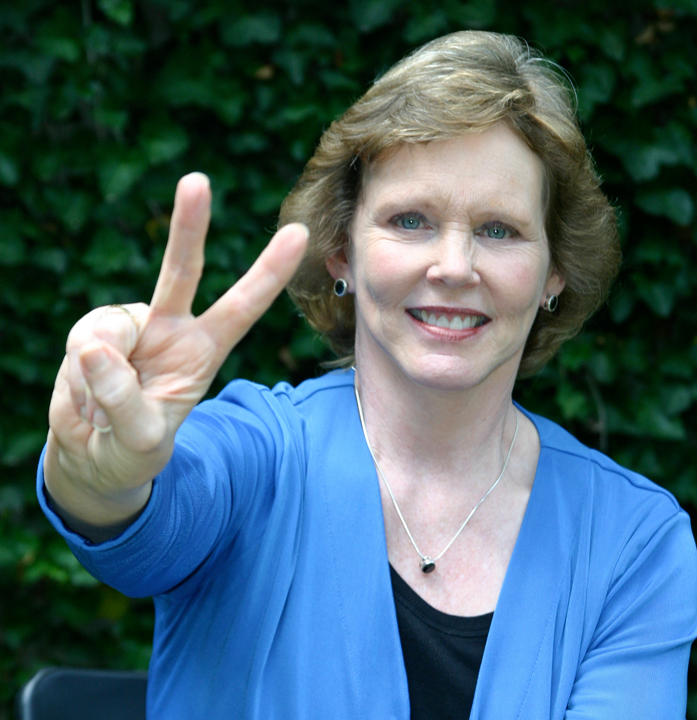 She’s got a detailed plan and a timeline for establishing an infrastructure here similar to what she accomplished in Central America. She envisions teachers across America attending her training sessions and integrating those techniques into their classrooms. She sees universities offering credits to students who complete the course. She sees children absorbing principles of peace at early ages and passing those beliefs down to subsequent generations.
She’s got a detailed plan and a timeline for establishing an infrastructure here similar to what she accomplished in Central America. She envisions teachers across America attending her training sessions and integrating those techniques into their classrooms. She sees universities offering credits to students who complete the course. She sees children absorbing principles of peace at early ages and passing those beliefs down to subsequent generations.
And she shows no hint of uncertainty despite myriad obstacles. “It’s replicable,” Johnson said.
It was the Fourth of July in 1962, and 10-year-old Rita Marie Johnson was waiting impatiently for the sun to go down. She and her brother and sister were eager to light their sparklers but first had to wait for darkness to cloak her family’s Missouri farm.
To kill time, Rita Marie took a stroll down the dirt road near their farmhouse. It was a walk that would change her life in ways that would take years for her to understand.
“As I walked I saw this beautiful sunset,” she said. “It was like my heart just opened, and I was feeling so appreciative of this beauty. I noticed that I was filled with this deep feeling of peace. And something inside me said, ‘You will work for peace.’ It was so vivid.”
Hers was a loving family but not one that sat around the dinner table talking about things like emotions and the need to avoid war. She’d been fearful of airplanes ever since she learned they could drop bombs from the air. And she recalled people talking about building fallout shelters for protection against atom bombs. But she’d never thought much about peace. In that moment she decided to make it her life’s calling, even if she wasn’t exactly clear on how she would accomplish her goal.
“I know [now] from what I teach that when I was walking down that road and saw that beautiful sunset, I was in coherence,” she said. “When we are coherent, when our hearts and minds are in a deep state of appreciation, that’s when we are most intuitive. That’s why my inner voice came through.”
She walked home and handed her sparklers to her surprised siblings.
“I was in such a state of awe that I gave my sparkers away, not because I didn’t enjoy sparklers, but I was so filled with inner sparkle,” she said. “I didn’t need outside sparklers.”
Her brother and sister eyed her suspiciously and asked what was going on.
“I couldn’t articulate it then,” Johnson said. “I didn’t tell my brother and sister this until about five years ago, but I never forgot it.” And she never gave up wanting to help others find that same feeling.
Johnson eventually became a minister and spent years at an Austin church. But in the 1990s she decided to follow a secular approach to peace. She’d been studying the work of Carl Rogers, Marshall Rosenberg, and other psychologists who examined ways to harness compassion and empathy. Johnson views those men’s early studies with reverence and spent years absorbing them.
She chose Costa Rica as the place to spread her peace studies because of its 20th-century advances in peaceful coexistence. The country went so far as to abolish its army after a bloody civil war in 1948.
Johnson began developing her techniques after establishing the Rasur Foundation in 1997. The name was inspired by a Costa Rican poem about a peace teacher named Rasur. Johnson’s mission was to strengthen the country’s peace model by demonstrating methods to deter violent tendencies. A few years later she began teaching nonviolent communication at the United Nations University for Peace in Costa Rica. In 2002 she quit to create a teaching method steeped in nonviolent communication.
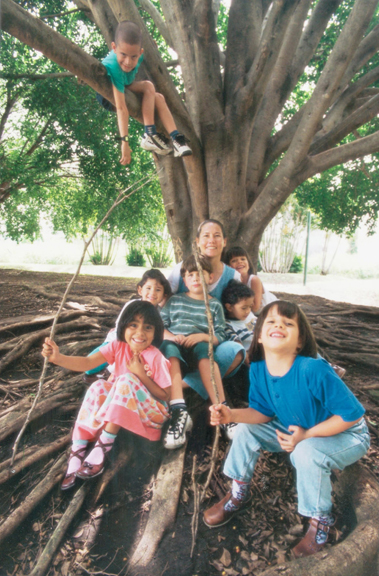 The program evolved into BePeace and has been taught in Costa Rican schools since 2004. A basic premise is to understand one’s own needs, recognize others’ needs, and establish a connection in working through conflicts.
The program evolved into BePeace and has been taught in Costa Rican schools since 2004. A basic premise is to understand one’s own needs, recognize others’ needs, and establish a connection in working through conflicts.
“I started training teachers to teach it in their classrooms,” she said. “We had peace from the bottom up, the grassroots level.”
But Johnson also wanted peace from the top down. In 2006, she and others pushed for the government to create a peace department. After three years of wrangling, Costa Rica in 2009 created the Ministry of Justice and Peace — only the third such department in the world. The ministry focuses on initiatives such as alternative conflict resolution and peace promotion. In the meantime, Johnson’s foundation was instrumental in pulling together various nonprofit organizations to collaborate on peace programs.
Johnson said the country’s leadership is open to even more peace initiatives — in May, former justice minister Laura Chinchilla became that country’s first female president. Before that, Nobel laureate Oscar Arias was president.
There’s still a long way to go before the program is in every school in Costa Rica, she said, but the framework is in place. Many teachers have been trained. The peace academy will continue training others. And Johnson is ready to turn over the reins to someone else.
“We’ve got a holistic national model of peace that’s inside out, bottom up, top down, and all around,” she said.
A couple of years ago, Johnson was practicing BePeace techniques with a group of fifth-graders at the Academy for Peace of Costa Rica, and a boy named José was being disruptive. “When he first arrived that day, he was punching people,” she recalled.
Part of the BePeace process involves using biofeedback software to show people how they can control their heart rates by achieving inner peace. José’s demeanor changed when he saw the proof on the monitor.
“Suddenly, he’s learning he has the power to shift into that,” Johnson said. “It’s empowering for kids who have ADD or are bouncing off the walls, when they learn they can choose to feel peaceful and be more intelligent.”
Toward the end of the training session, Johnson asked José if he’d had any conflicts during the week. He described how he’d failed an exam and then took his anger out on a schoolmate. “He said he had been so angry he went out on the playground and pulled this little girl’s hair, and he pulled her all across the playground,” Johnson said.
Johnson asked him what he was feeling in his heart, guessing that he was angry but also lonely and feeling disconnected from his teacher and his schoolmates.
“As I guessed these feelings and needs, this big tear slides down his cheek, and in that moment I knew he was connected to himself. He was getting in touch with his needs and feeling my empathy, feeling this connection between us — that he wasn’t alone anymore,” she said.
She’s seen similar changes in many children over the years who’ve been introduced to BePeace techniques. It takes more than one session, but children like José can learn a new way to respond to problems if the philosophy is instilled over time. That’s why Johnson is focusing her efforts on public school teachers and college students, the people who are currently teaching children, or those who are about to go into teaching.
“José’s teacher knows this now and is still teaching this,” she said.
So why would José choose to address his loneliness by bullying a classmate instead of trying to make friends?
“It’s still some form of human connection, even though it’s negative,” Johnson said.
Her version of nonviolent communication also involves a deck of cards that list a variety of human emotions and needs. Children who are upset can choose cards that describe their emotions (such as anger, loneliness, and hurt) and cards that describe their needs (such as trust, love, and understanding). Examining emotions and needs before acting out gives children a sense of control, she said.
She teaches people to close their eyes, put their hands over their chest, and focus on joyful thoughts (Johnson usually thinks of her dog, Shanti). Think, feel, and breathe with the heart. When they find cohesion, they feel more grounded, calmer, and empathetic. Johnson has seen it work many times.
Talking to peace teachers can be frustrating, especially for a reporter seeking practical examples of whether their techniques work. Peace instructors tend to talk in concepts and theories, and use words such as “cohesion” and “paradigms.” Even Johnson, who is among the most plainspoken, can go off on verbal excursions that come dangerously close to mumbo-jumbo.
“If I’m coherent, I’m radiating out that coherent wave, and you’re feeling it,” she said. “It goes out six feet beyond my body in an electromagnetic field. Same with you, if you’re radiating coherence, I’m getting it. As we each get that, if we have practiced coherence and we’ve been sending this coherent wave out as we do this activity with all these kids, we have created a coherent energy field that helps everybody just to be their best selves.”
Huh?
But when theories are broken down into basic, real-life applications, they’re simple. Brenda Nolan is a rehabilitation counselor in Massachusetts and has used Rosenberg’s principles of nonviolent communication for years. Johnson relied on those same principles in developing BePeace.
Nolan became interested in the theories while raising her children in the 1990s and driving a school bus. She was amazed how she could rein in rowdy school kids by following Rosenberg’s examples of conflict resolution through peaceful interaction.
“When I first got on the buses I thought I would be a nice school bus driver, but I discovered it wasn’t that easy,” she said.
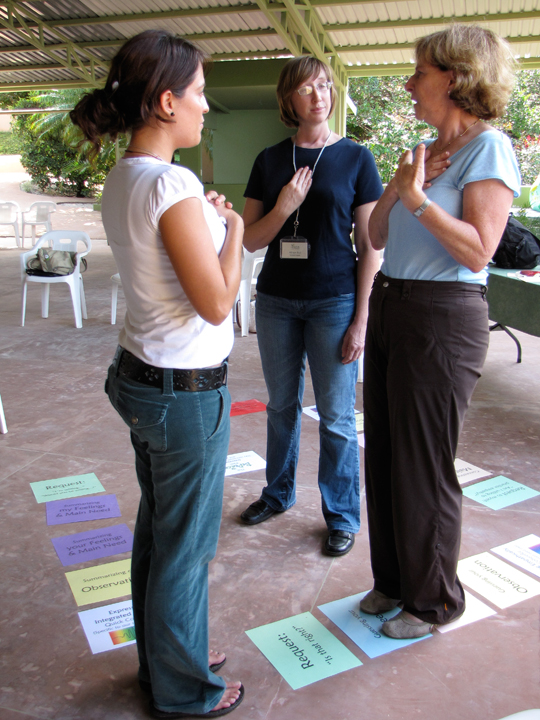 Kids were jumping out of their seats, throwing things, fighting, calling each other names. She began telling them very clearly what she wanted but without rancor. She was concerned for their safety, so she wanted them to stay in their seats. She was concerned about bullying and aggressive behavior, and she wanted everyone to respect one another.
Kids were jumping out of their seats, throwing things, fighting, calling each other names. She began telling them very clearly what she wanted but without rancor. She was concerned for their safety, so she wanted them to stay in their seats. She was concerned about bullying and aggressive behavior, and she wanted everyone to respect one another.
“I never threatened or punished the kids,” she said. “I focused on what I wanted instead of what I didn’t want.”
When children got out of line, she would ask them to stay on the bus for a couple of minutes, and she asked them what was on their minds. But she didn’t disrespect them, and they were allowed to air their thoughts.
“Kids really became respectful,” she said.
Sample story: Two boys were arguing and calling each other names, and Nolan asked them to stay behind and talk for a minute. The argument was about a gumball. She calmed them down by talking quietly. They followed suit. She asked each of them what they wanted (the gumball). She asked them to consider not only their own wants, but the other person’s as well. Then she asked them to examine ways to solve the dilemma. One of the boys suggested they cut the gumball in half. Problem solved.
Introducing peace practices in classrooms at an early age helps children understand these processes on their own, Nolan said.
“It doesn’t all happen at once,” she said, but “the skills are really powerful.”
Carol Donovan is a professional mediator and executive director of Peacemakers Inc. in Dallas. Last month she invited Johnson to give an abbreviated BePeace training session to Dallas teachers. Bullying in schools was a hot topic, with several high-profile national cases being discussed in the media.
“We rounded up a bunch of teachers from public, private, and charter schools, and we also solicited a bunch of scholarships from businessmen and businesswomen who donated money for the registration fees for the teachers so they were able to attend for free,” she said.
Teachers are already overwhelmed with TAKS testing and other duties, and many public school districts are battling budget problems and high dropout rates. Getting schools to adopt peace curricula will be tough. Showing teachers how to employ BePeace’s conciliatory principles while sticking with current curricula seemed a simpler prospect.
“If we’re able to train these teachers, they’ll be able to train the children, which will lift them up into an arena where they can learn more easily,” she said.
And, as the theory goes, children will be less likely to resort to aggression. In fact, once they absorb the principles of communication, they’re apt to discover they don’t view nearly as many situations as problems.
The peace trainers who were interviewed for this story seemed to have something in common with their offspring: They all described happy home lives. Taylor Duvall, a Dallas-based nonviolent communication trainer, said her 7-year-old son often giggles in the face of tough times. “Children who have this skill behave differently and live peaceful lives,” she said. “Internally motivated children are naturally compassionate.”
Castleberry, a trailblazing journalist and longtime peace advocate in the Metroplex, attended that abbreviated BePeace session last month, reluctantly. She knew Johnson and was impressed by her integrity, techniques, and passion. But at 88, Castleberry had been to more than her share of peace seminars and training sessions over the years.
“I wanted to love, appreciate, and support Rita Marie for what she had done and was doing, but I very honestly felt that I did not need one more workshop/program/project to enlighten me,” Castleberry said. “I went … because I wanted to support her and Peacemakers. … And I was blown away. I am not too old to learn. The synchronicity of mind/body/spirit that is spelled out in BePeace makes perfect sense. Instinctively, I had always known this. To learn tools to put it all together is intriguing.”
Karen Blessen is an artist, writer, and teacher who combines art and peace principles in teaching middle-school students in the Metroplex. Most teachers aren’t looking for new curricula to teach, but they are generally open to new techniques to reach students, she said.
“We’re at a crisis point,” she said. “There is too much violence, fear, chaotic behavior. I like Rita Marie’s [BePeace] program. What she’s doing is terrific. It empowers the teachers to have a toolbox to work with kids on nonviolent communication. It would be great if she got in all the schools.
“There are a lot of obstacles,” she said. “Administrators and teachers have a lot on their plates. It’s going to take some time to be persuasive about it and keep spreading the message and track the results.”
BePeace isn’t aligned with any religious institutions, but church congregations have been among the early devotees. The Rev. Tony Lorenzen at Pathways Church in Southlake invited Johnson to speak to adult church members several weeks ago and said they embraced the program.
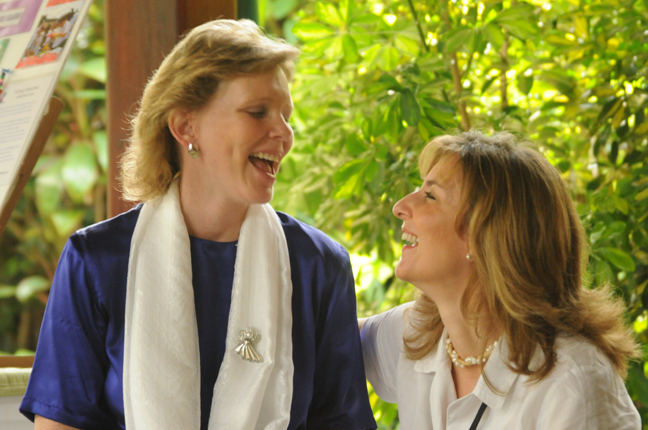 “I would like us to get to the point where we are teaching our kids this at an early age,” he said. “If you learn to behave in this way as a young child, you don’t learn the patterns of reactionary behavior.
“I would like us to get to the point where we are teaching our kids this at an early age,” he said. “If you learn to behave in this way as a young child, you don’t learn the patterns of reactionary behavior.
“There is more of a problem with bullying in schools in the area than people want to admit,” he said. “There is more intolerant behavior than people want to admit. This is a nonviolent way of approaching it.”
The morning sun squeezed past tree branches and through a large picture window to brighten the Arlington kitchen where Johnson sat sipping coffee. For the past couple of weeks, she’s been staying at J Kendel Johnson’s house in Arlington. J Kendel (no relation) is a proponent of nonviolent communication and became aware of Johnson’s work long before he met her.
“From the moment I first heard about Rita Marie, I had a sense that she was not just out to sell a book or some new fad program or something. When we finally met, it didn’t take long … to get how earnestly she’s trying to use her life as an opportunity to bring peace and healing to the world,” he said. “I’ve known some other folks on the national stage who have difficulty living the ideals and practices they promote publicly, so I couldn’t have felt more relieved to find out she totally walks her talk — every minute of every day, so far as I’ve been able to witness.”
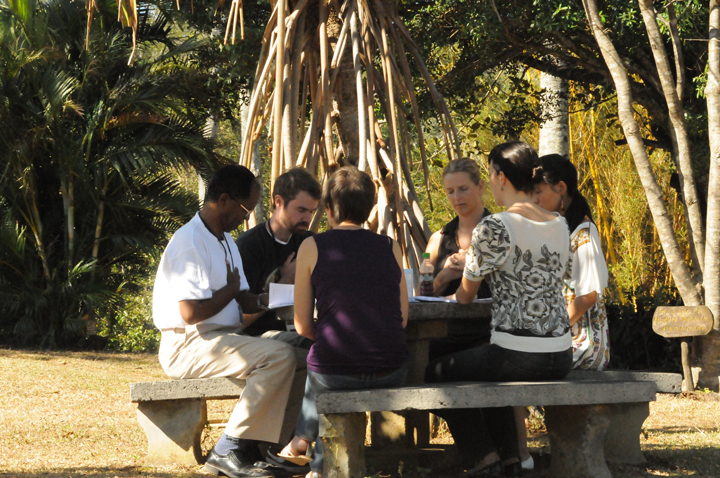 Rita Marie talked about her program, and the pull she felt to come home to the United States. Her pleasant, direct demeanor is contagious, and she really does seem to radiate the sense of calm she described.
Rita Marie talked about her program, and the pull she felt to come home to the United States. Her pleasant, direct demeanor is contagious, and she really does seem to radiate the sense of calm she described.
“I feel called to my own country,” she said. “Right now I know this is where I belong. I really feel like I had to go away for 17 years to learn how to do this. I had to learn how to do it personally, I needed to learn how to teach it, and I needed to see that in one small country we could at least set up the framework that supports peace. I had to learn about peace infrastructure.”
Her country isn’t so peaceable these days. War in the Middle East is dragging on, but she’s not interested in taking a stand on it. “Essentially, we are for every person and every living thing,” she said. “We don’t take any political stance. We don’t affiliate with a religion or political party. We are completely neutral. We are for peace.”
Earlier this year, Johnson returned to the U.N. academy in Costa Rica to teach a graduate class her techniques. The 26 students from 16 different countries who took the class received two graduate credits each. “Because the U.N. university offered our BePeace course for credit, that has given us a way to enter into dialogue with U.S. universities,” she said.
Several universities, including the University of North Texas, are considering offering BePeace courses for credit.
“That’s in the talking phase right now,” UNT’s peace institute director David Mason said. “Making the arrangements and getting funding will take a while.”
“It’s a transferable skill,” Johnson said. “We see incredible transformations every day because we know how to teach this.”
She has spent the past month creating a three-year strategic plan for bringing BePeace to the United States. She has applied for a grant from the Ashoka Foundation, an international group that funds salaries for social entrepreneurs. Johnson’s goal is to secure funding, prepare trainers, and establish university courses in 10 cities within the next year.
Johnson is ready to lead the charge — peacefully, of course. And perhaps the people who attend her session on June 14-18 at the Unity Church of Arlington will find their version of the epiphany she experienced so long ago on that dirt road in Missouri.
“Most of us have learned to become angry or resentful quickly when things don’t go our way,” she said. “But if you find coherence through channeling your feelings from your brain to your heart, you can find that sunset.”











